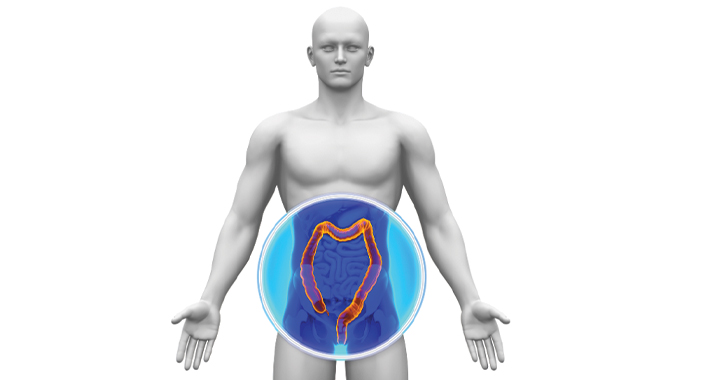What is Colon Cancer?
Colon cancer can cause bleeding with bowel movements, anemia (low blood counts), abdominal discomfort, or change in bowel habits. It is said that both men and women are at risk of colon cancer. More often colon cancer causes no symptoms and is detected during diagnosis or colonoscopy. If you had benign colon polyps then colon cancer can happen to you easily.
Malignant cells present in the colon or rectum can invade and damage the nearby tissues and spread through the bloodstream or lymphatic system. When colorectal cancer spreads in lymph nodes, it reaches the liver begins to damage tissues further, this mostly happens in the finals stage. A colonoscopy (test to detect colon cancer) should be done if your age is 45 or above.
Also, if you have a familial history of colorectal cancer, you may be advised to start screening at a younger age. Colon cancer occurs in the last 5 feet of your intestine. Surgery is the primary treatment option for colon cancer, most surgeries can be performed under minimally invasive techniques, offers the advantage of less incision, shorter hospital stay, and quick recovery. Your treatment actually depends upon the extent of your cancer.
Stages of Colon Cancer
The staging method is used by oncologists or gastroenterologists to check the extent of cancer.
- Stage 0 – This stage is also known as carcinoma in situ. Usually, cancerous cells are seen in 1-2 areas like in mucosa or inner wall. At this point, doctors use polypectomy which can easily take the abnormal cells and prevents the growth of colon cancer.
- Stage 1 – Along with inner lining and mucosa if cancer has reached submucosa and muscle layer also but still too far from lymph nodes then it is in stage 1. Half colectomy is performed.
- Stage 2 – Cancer becomes deeper and intense in this stage and when submucosa becomes incapable to stop it. Stage 2 cancer has subdivision includes 2A, 2B, and 2C.
- 2A stage – Cancer is far from lymph nodes but it is near to the exterior layer of the colon and cancer is small in size.
- 2B stage – During this stage, cancer is in the inner layer which lines abdominal organs, in the visceral peritoneum cavity.
- 2C stage – Heavily spreading cancer reaches to the neighboring structures.
- Stage 3 – Cancer begins to spread in lymph nodes and it is also subdivided into 3 stages:
- 3A stage – Only 1-2 lymph nodes which are close to it get harmed in this stage, cancer is firmly attached to the muscular layer.
- 3B stage – Tumor starts spreading in more than 2 lymph nodes.
- 3C stage – After destroying the muscular layer, it moves further to harm other areas, simultaneously it spread in more than 4-5 lymph nodes.
- Stage 4 – During the 4A stage, cancer is at its peak and it becomes uncontrollable quickly spreads in the different organs and structures, like in lungs and liver. The size of the cancerous cells also becomes enormous. And in the 4B stage cancer typically spreads in more than 2 organs.
Survival Rates of Colon Cancer
To increase the survival rates, it is very important to eliminate the cancer cells from the colon and rectum. From stage 0 to stage 4, the survival rate for the 5 years is around 60-70%, which person with this cancer, doesn’t matter in which stage he/she is, survives a minimum of 5 years with this cancer. So if we calculate the exact individual percentage then for patients with stage 0 or stage, after treatment, survival rates are 85-90%. Stage 2 and 3 have a 60-80% survival rate and those with stage 4 cancer survival rates are about 10-40%.
Symptoms and Causes of Colon Cancer
In the initial stages, it is a bit tricky to observe any symptoms, symptoms can be seen in stages 2,3, and 4 mostly. The most common symptoms are:
- Diarrhea or runny stools
- Blood contained stools
- Constipation
- Quick weight loss
- Frequent vomiting
- Tiredness and fatigue
- Sudden rectal bleeding
- Abdominal pain
Have a conversation with the doctor if all these symptoms are noticed in your routine life.
Colon cancer is caused due to inappropriate lifestyle and genetic mutation maximum times.
Treatment for Colon Cancer
The doctor will suggest you treatment on the basis of your age, physical and mental health, and the type of stage in which you are currently in.
- Surgery – This surgery helps to remove the polyps and various techniques are available such as wire loops, biopsy forceps, and electric burning of polyps. Because the bowel’s lining isn’t super sensitive any of these will not cause severe pain and discomfort. Resected polyps are examined under the microscope by lab pathologists to determine the tissue type and to check cancer. Colon cancer can also be treated by laparoscopic and robotic approaches to hasten the recovery.
- Chemotherapy Now, this treatment is for the people who are in an early or intermediate stage, several types of drugs are given to vanish the cancer cells. Doctors recommended drugs are fluorouracil, Camptosar, lonsurf, Xeloda, and Eloxatin. All these drugs are very effective but come with many side effects such as diarrhea, vomiting, weakness, hair loss, color changes in nails and texture of skin also become different, etc.
- Radiation Therapy – High energy light beams are used to kill cancer cells. Radiation therapy sometimes, combined with chemotherapy. The combo is used if the surgery is not the right option for a patient. In the process, light beams are kept on the area of the tumor. If the patient has microsized cancerous cells in the colon then the surgery is a daunting thing, as radiation therapy is enough to remove the cells. This also contains some side effects such as skin blisters, dry mouth, swelling in the treated area, etc.
- Tomography – It is a kind of radiation therapy in which a 3D image is used to check cancer. It works by delivering radiation beams from multiple directions allowing the radiation to match the shape of the colon tumor. If your doctor prescribes tomography you will lie on the table that is moved through the donut-shaped machine and this treatment will be given from 3-5 days, depending upon its need.
Additional therapies like immunotherapy ( therapy that helps in making immunity strong) are also suggested. Beneficial medicines like Cetuximab, nivolumab, regorafenib, bevacizumab, and panitumumab can also help to some extent.
Diagnosis for Colon Cancer
Early detection is important and screening test can help detect colon and rectal polyps before it becomes cancerous. More than 90% of people with this disease are diagnosed after the age of 50.
- Fecal test – The use of the fecal test to check invisible bleeding of the stool, the fecal test is categorized into two parts:
- Guaiac-based fecal blood test – In this sample of stool will be kept on the card, if any hidden blood is present in your stool card will show a different color.
- Fecal immunochemical test – If your blood is carrying any protein or hemoglobin in the stool area, this test helps.
- Blood Test The doctor will perform certain RBC, WBC, and platelet count checks to know in detail about colon cancer.
- Colonoscopy – It is a therapeutic procedure used to examine the colon with the camera-equipped flexible instrument. The indications for these procedures are many, very commonly, to evaluate colon cancer. The colon is up to 80-90% effective in reducing deaths related to colon cancer. This procedure takes 45-60 minutes. During the procedure, the colonoscope will be inserted through the rectum and moved gently to the bends of the colon. Thus physician can see the lining of the colon through the camera.
- Sigmoidoscopy – A sigmoidoscopy is an examination of the colon with the help of a tube called an endoscope. The endoscope has tiny glass fibers that transmit light to the tip where a tiny camera takes images of the bowel lining.
Cost of Colon Cancer Treatment
Including diagnosis and treatment, on average the cost is around $2000 -$30,000, it all depends on the type of the stage of colon cancer, the treatment you choose, and the additional medical expenses.
The information provided in this blog is for educational purposes only and should not be considered as medical advice. It is not intended to replace professional medical consultation, diagnosis, or treatment. Always consult with a qualified healthcare provider before making any decisions regarding your health. Read more






